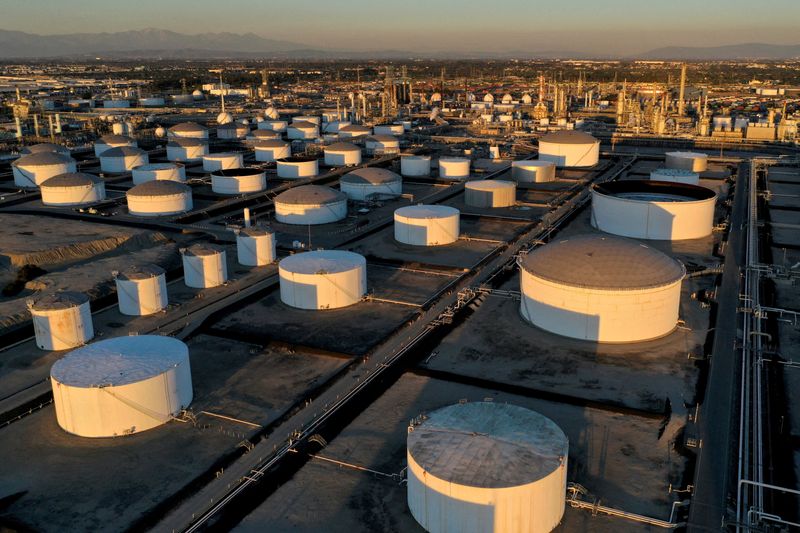By Laila Kearney
NEW YORK (Reuters) -Oil prices fell on Wednesday after U.S. data showed rising crude inventories, but losses were limited by the risk of Iranian supply disruptions caused by the Middle East conflict and Hurricane Milton in the U.S.
futures settled at $76.58 a barrel, falling 60 cents, or 0.8%. U.S. West Texas Intermediate (WTI) futures settled down 33 cents or 0.5%, at $73.24 a barrel.
Crude inventories jumped by 5.8 million barrels to 422.7 million barrels last week, the Energy Information Administration said, compared with analysts’ expectations in a Reuters poll for a 2 million-barrel rise.
The build was smaller than estimated on Tuesday by trade group American Petroleum Institute, which also limited declines in oil prices, said Bob Yawger, director of oil futures at Mizuho in New York.
Larger-than-expected drawdowns in gasoline and distillates also helped soften the impact to prices, Yawger said.
“There’s a bullish element in the gasoline number, which might have been a rebound from the hurricane,” said Yawger, referring to Hurricane Helene, which struck the U.S. late last month.
The country is bracing for a second major storm, Hurricane Milton, which spawned tornadoes and lashing rain hours ahead of its expected landfall in Florida on Wednesday. The storm has already driven up demand for gasoline in the state, with about a quarter of fuel stations selling out of supplies, which has helped support crude prices.
MIDDLE EAST IN FOCUS
Markets remained on edge about a potential Israeli attack on Iranian oil infrastructure, even after oil prices tumbled by more than 4% on Tuesday on a possible Hezbollah-Israel ceasefire deal being reached.
U.S. President Joe Biden spoke with Israeli Prime Minister Benjamin Netanyahu about Israel’s plans concerning oil-producer Iran in a call on Wednesday. Neither the White House nor Netanyahu’s office provided details of the discussion.
“We’re still on tenterhooks with the Middle East situation,” said John Kilduff, partner at Again Capital in New York. “Speculation of a strike on Iran is worth about $5 a barrel.”
Even with threats to the oil-producing Middle Eastern region top of mind, economic problems in top crude importer China made it difficult for prices to advance.
“Despite the current heightened tensions in the Middle East, it is easy to forget that the oil market is very much vulnerable to corrections due to the ongoing bearish macro narrative centered on China,” said Harry Tchilinguirian, head of research at Onyx Capital Group.
China said on Tuesday it was “fully confident” of achieving its full-year growth target but refrained from introducing stronger fiscal steps, disappointing investors who had banked on more support for the economy.

Investors have worried about slow growth dampening fuel demand in China, the world’s largest crude importer.
Weak demand continues to underpin the fundamental outlook. The U.S. Energy Information Administration (EIA) on Tuesday downgraded its demand forecast for 2025 on weakening economic activity in China and North America.

